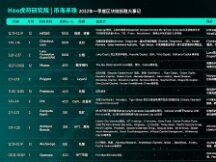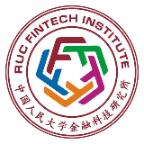BIS: Embedded Supervision: How to get involved in Blockchain Finance
Promoting the distribution of information technology in the financial sector helps improve financial efficiency and effectiveness. This article discusses the reasons for surveillance to read business information and simply review tokenized market management procedures to reduce the need for active businesses. Following the development of these plans, this article examines the circumstances under which broadcasting may apply to law enforcement and discusses the legal and regulatory requirements for fair competition and low standards for small and large businesses.
introduction
Governments around the world have today struggled to prevent the proliferation of information technology ("DLT") in the financial system. The challenge they face is how to effectively use technology-driven interventions to ensure that similar risks are addressed. The growth of DLT in the financial sector has improved quality and supervision. However, how to facilitate the achievement of low-cost surveillance is an important goal of technology.
Based on this, we learn how the “same risk, same risk” principle applies to DLT-based financial markets. In this article, we believe that rather than trying to integrate cryptographic tools into existing policies (such as security laws used long before DLTs), it is better to explore whether new technologies can better manage risk on financial markets. Therefore, we recommend "do-it-yourself monitoring", which reads the money around the business model and recognizes the automatic monitoring of compliance with operational objectives. On the other hand, it reduces the need for businesses to write, analyze and communicate frequently. Information, on the other hand, makes commercial sense through trade agreements.
DLT enables the exchange of asset return tokens and decentralized financial engineering based on tokens through automated (“smart”) execution contracts. The most important innovation is that it secures the reliability of data and promotes the improvement of financial transactions with decentralized data as agreed by the industry. Second, internal monitoring can also reduce inconsistencies in data availability, data collection and access rates, and confidentiality. Legal expenses have a greater impact on financial companies and a greater impact on small businesses. Coordinators can use cryptographic tools to report a risky business to the public without disclosing an individual's changes, thereby managing the business and its subsidiaries.
Distributive principles of integrated supervision
The concept of consolidation goes beyond just reading a list, and the main problem is that the data is no longer usable because it is stored in so many places. In today's proceedings, the credibility of the information was guaranteed by the legal process, the organizations involved and the threat of legal action. In contrast, in DLT-based industries, data reliability is guaranteed by financial support. In this case, regulators must first ensure that the marketing authorization agreement is strong enough to ensure the quality of the information contained in the mailing list. From the point of view of the management bases of the use of export products for financial supervision, this article presents four principles:; Regulators should take into account the industry's regulatory response. Low-cost compliance should be encouraged in order to create a competitive environment for businesses large and small (Figure 1).

Figure 1 Principles of Home Care
Developed from existing management and operating principles, the Four Principles of Internal Care show that management can be more efficient and streamline maintenance, reduce current market costs, and provide leverage to businesses of all kinds. . .
Ecosystem monitoring: a prerequisite
This chapter discusses current compliance procedures and costs, and how Integrated Oversight improves the DLT-based industry compliance process to enable decentralized asset-backed token trading and decentralized financial engineering as well. than the tokens.
The process followed today involves several layers of data segmentation. In retail and wholesale, for example, banks have created millions of private businesses. This information must be collected, compiled and communicated to a group of participants (internal risk management, internal compliance, governance, meetings, etc.) and tutors. This information should not only be submitted, it should be submitted regularly. Therefore, cost measurement and data variance are important to adhere to the process.
Compliance is an investment of effort, and administrators face a conversation to get the information they need and keep the cost of compliance as needed. In terms of costs, research shows that compliance costs typically represent a percentage of total business operating costs, but not all are due to the administrative costs of financial compliance, and the costs to executives are high. .

Figure 2 Compliance fees
data transmissionThis is an unavoidable cost that managers pay to cover the cost of compliance. Although significant differences have slowly closed since the financial crisis, new gaps have continuously arisen in parallel with the improvement of the financial system.
DLT-based innovations can transform financial markets, in part because they offer new standards of visibility. One of its main applications is to increase revenue and improve registration security. This reduces administrative costs and, above all, reduces the risk of payment. As this section goes, it can be used for the following businesses:
Smart contracts can replace the central securities depository (CSD). As the latter is a specialized financial institution that maintains security, CSD strengthens the electricity industry by reversing physical certification and promoting business automation.
Options and future clearing houses will also be automated. These financial institutions are responsible for reducing the risk of bad financial assets or equipment by eliminating payments and the use of financial assets (securities and assets). In these cases, DLT-based clearing systems have both cash (for litigation) and listed financial instruments, or operate through smart contracts that tie cash to the secure blockchain. Smart contracts can create trading conditions for both parties (cash and shipping only), eliminating the risk of settlement.
In the future, the stock and stock markets or the retail markets could also become competitors in the field of electronics, in particular consumer electronics. In these markets, sellers can be cautious when announcing their trading needs instead of raising prices. Unlike open order books, we prefer to negotiate through a network of sellers / agents, who can rely on contacts to do business with lower prices. . This DLT-based version of the Marketplace allows participants to perform a cost research process by accessing industry-specific products and demand curves.
The above examples show that the main benefit of DLT is the efficiency of the exchange process, which can reduce the exchange rate and the risk of non-payment.
As this DLT-based industry evolves, it will provide up-to-date information to finance managers and other stakeholders. The bottom line is that the DLT-based industry already has all the data involved, and admins can get that information at any time. But obviously, the list is usually encrypted because financial companies don't want to go public. Key compliance processes are determining where internal and external organizations can access bottom line data and at what level of integration (Figure 3).

Figure 3 Compliance procedures
This framework enables directors to comply with the Basel III investment framework. But it is worth writing.Integrated administration doesn't mean that data has to be publicly accessible, and it doesn't mean that all administrators have access to all levels of data.. Administrators only have access to relevant data, depending on whether they want a higher level of data exchange or higher visibility. In this way, the integrated monitoring helps to maintain the privacy of the company and its customers, as cryptographic devices can be used to restrict access to the site, the selection of the location of the files below or of the objects. similar. For example, information about financial risk may be disclosed, but important micro data may not be available.
At the same time, implicit oversight does not reduce the leadership of the board of directors and the CFO through the regulatory compliance role. While DLTs can authenticate the transfer of ownership of a token-based token from one organization to another, the connection between the token and the token must be legal. The challenge facing lawmakers and regulators is how to use technology in new regulatory frameworks to create a more stable and competitive economy.
Carry out integrated supervision of end economic markets
The business as a business is always protected by law, which is the last product of the law and cannot be reversed. Integrated monitoring changes legal and organizational trust with the plan, allowing businesses to use financial support to achieve consensus (vision) on data updates (eg, businesses). If this agreement turns out to be irrevocable, the administrator will determine that it is invalid.
To that end, this article simulates a 'decentralized' business as a whole and uses blockchain-based data as a reliable alternative to legitimate data. Events based on decentralized business operations and decision makers can rely on the state of general ledger data. Based on the simulation model, the article believes that monitoring is not a free meal and that the actions of the administrators themselves can affect the consensus of the company. So, if business participants know that their information is being used to determine whether their information is compliant with regulations, there is an incentive to deceive management and remove it from the blockchain.
operating level
The primary goal of home care should be to provide playgrounds for organizations of all sizes while reducing the ongoing cost of compliance. At the same time, it will be necessary to determine the meaning of real “decentralized” decision-making, risk and risk management to be effective for the business model and to ensure competition. The second objective is to reduce the low cost of operation by providing easy access to reliable and legitimate data. A third objective is to solve problems. If there is a security hole in the smart contract and the information in the smart contract turns out to be inaccurate, then the administrative procedure or model can decide on the security. In the final analysis, the world is often very difficult to express in terms of rules, and the added value of decentralized automation should be seen as flexible contract design.8, but there are many difficult questions that need to be resolved by law.
Therefore
This statement believes that administrators can use DLT to effectively monitor financial performance. The key point, however, is that monitoring blockchain finance should not leave the long-term goal of monitoring certain industries. Instead, lawmakers and regulators will consider examining how technology will change as the economy changes.
An important principle of home care is the use of processes based on the trust of the industry of "delivery" for care. In DLT-based marketing, the reliability of data is guaranteed by business support, and managers must ensure that the market consensus is strong enough to guarantee the quality of the information contained in the release form. These decisions address key legal questions facing lawmakers, regulators and international standard setting: how to include the concept of financial security in modern legal processes and how to resolve balance sheet assets.
An important challenge for lawmakers and regulators is to develop the concept of trade fairness in the law governing the business community, for example, allows members to trade without interference from the base of record. Only the last principle of supervision of financial affairs can be changed so that DLT obtains the desired position in financial management. At the same time, lawmakers and regulators should develop accompanying procedures to regulate economic and social development, clarifying the allocation of responsibilities for decentralized industries in the event of crime, and establishing a stable and competitive economy.

Scan QR code with WeChat







